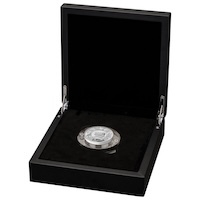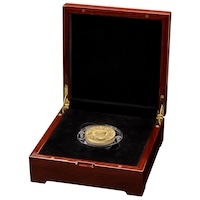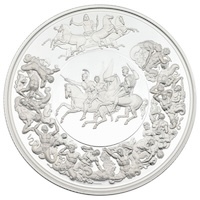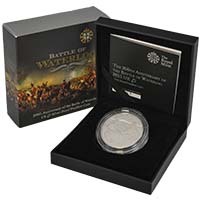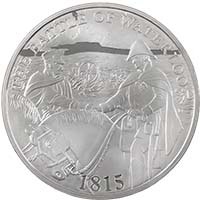What Is The Waterloo Medal?
The Waterloo Medal was commissioned to commemorate the Battle of Waterloo, fought on 18 June 1815 in modern Belgium. The battle marked the culmination of the Napoleonic Wars, with a coalition including the United Kingdom winning a close-run victory over Napoleon Bonaparte's forces.
The Waterloo Medal was designed by a fiery Italian artist, Benedetto Pistrucci, who is best known for creating the St George and dragon design used on gold Sovereigns. Pistrucci took decades to complete the commemorative medal, which was never struck in his lifetime. Despite this, numismatists describe its intricate, allegorical engravings as some of the most impressive ever designed in Britain.
Pistrucci's Waterloo Medal should not be confused with the medal awarded to soldiers and officers who took part in the battle. The enormous 130-millimetre medal was intended to be given to dignitaries, including the allied leaders who are shown on the reverse. The obverse features the two victorious generals, the Duke of Wellington and Field Marshall Graf von Blücher, as well as a range of classical figures.
Read more: The Waterloo Medal: Benedetto Pistrucci's Last Masterpiece
The Great Engravers Collection
The Great Engravers series is a premium coin collection from the UK's national mint. These coins feature remastered versions of some of the most beautiful designs from British coinage history. Combining high-tech imaging equipment with traditional hand engraving, The Royal Mint's team have produced new coins that closely replicate rare originals.
Great Engravers coins are available to a select group of collectors in both 24-carat gold and 999 silver. They come in a range of different sizes, including some of the largest coins ever made in the United Kingdom. Every Great Engravers coin is UK legal tender and features a portrait of the reigning monarch on the obverse.
Initially, The Great Engravers collection exclusively focused on masterpieces by William Wyon but 2023 marked a change with a new release inspired by the work of 17th century engraver, Thomas Simon. Subsequent issues have profiled the work of Benedetto Pistrucci, starting with his St George and the dragon design, struck on 2024-dated coins.
Royal Mint Waterloo Medal Release
The Waterloo Medal is the second design attribute to Pistrucci to be re-created for The Great Engravers series.
The Royal Mint has announced that this issue will be in two parts, with the obverse design featuring four allied leaders released first in 2024. The reverse of the medal will follow in 2025, marking 210 years since the battle.
Each remarkable design will be struck on an extensive collection of proof coins, ranging from 2oz silver proof collectables to enormous 5kg gold proof coins.
The following sizes of Waterloo Allied Leaders coins will be available:
- 2024 Waterloo Medal Allied Leaders 5kg Gold Proof
- 2024 Waterloo Medal Allied Leaders 2kg Gold Proof
- 2024 Waterloo Medal Allied Leaders 1kg Gold Proof
- 2024 Waterloo Medal Allied Leaders 5oz Gold Proof
- 2024 Waterloo Medal Allied Leaders 2oz Gold Proof
- 2024 Waterloo Medal Allied Leaders 1kg Silver Proof
- 2024 Waterloo Medal Allied Leaders 10oz Silver Proof
- 2024 Waterloo Medal Allied Leaders 5oz Silver Proof
- 2024 Waterloo Medal Allied Leaders 2oz Silver Proof
Mintage figures for 2024-dated Waterloo Medal coins closely mirror those for the St George and the Dragon collection, conforming to a trend of gradually decreasing issue limits from The Royal Mint. Comparing the figures for previous Great Engravers releases, the 2024 two ounce gold proof Allied Leaders coins hold a mintage of 195, comparable to the figures seen for the sought-after 2019 2oz gold proof Una and the Lion (225) and significantly down from the 2021 2oz gold proof Gothic Portrait (350).

